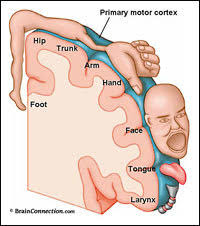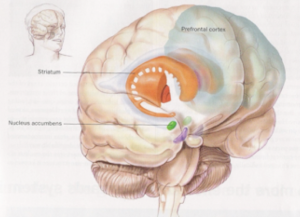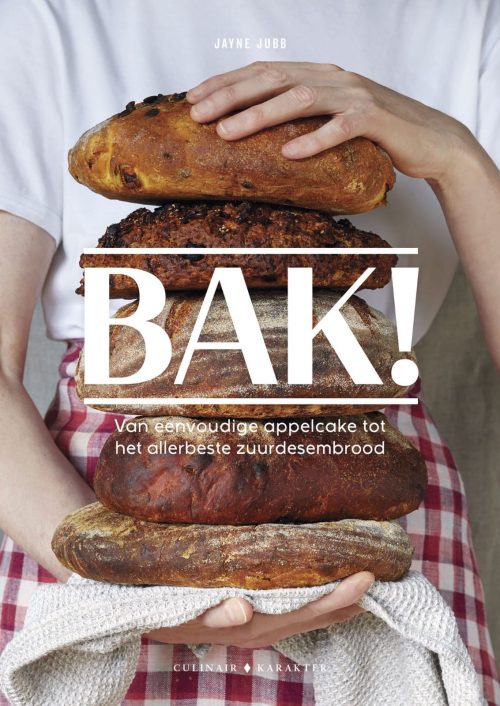Do you know how powerful kindness and human contact is?
As a neuroscientist, I’ve done research into neurobiology behind placebo effect, and in particular the healing power in the human relationship with your doctor or therapist. It’s this human contact that has the potential to trigger pathways in our brain that can naturally unleash an internal pharmacy, the pathways of which are mimicked by our normal pharmaceutical drugs externally. It is heady stuff. As a baker it is handy to know that kindness really can work wonders….. Let’s look at how that happens.
Vagus nerve
 At the top of the spinal column there is a bundle of nerves called the vagus nerve. It activates different organs in the body, for example, the heart, lungs, liver and digestive organs. When activated, it is likely to produce that warm glowing feeling in your chest which you probably recognise from when somebody has done something unexpectedly (nice) for you. There are people who have naturally high vagus nerve activation in a resting state. These people are more likely to generally feel emotions that promote compassion, gratitude, love, happiness and feelings of caretaking. Children with high resting state activation are more cooperative and likely to give. Neuroscientist Stephen Porges has called it the nerve of compassion and has spent years researching into it. It is thought to stimulate certain muscles in the vocal chamber – enabling (compassionate) communication – and it is closely connected to receptor networks for triggering the release of oxytocin.
At the top of the spinal column there is a bundle of nerves called the vagus nerve. It activates different organs in the body, for example, the heart, lungs, liver and digestive organs. When activated, it is likely to produce that warm glowing feeling in your chest which you probably recognise from when somebody has done something unexpectedly (nice) for you. There are people who have naturally high vagus nerve activation in a resting state. These people are more likely to generally feel emotions that promote compassion, gratitude, love, happiness and feelings of caretaking. Children with high resting state activation are more cooperative and likely to give. Neuroscientist Stephen Porges has called it the nerve of compassion and has spent years researching into it. It is thought to stimulate certain muscles in the vocal chamber – enabling (compassionate) communication – and it is closely connected to receptor networks for triggering the release of oxytocin.
Oxytocin: the molecule of kindness
Oxytocin is an important neurotransmitter and hormone that fosters the ‘tend and befriend’ response that has completely the opposite effect to the adrenaline flight, fight or freeze responses. It is the hormone that gets released by a mother at birth to ensure that she bonds with her new-born baby.
Oxytocin has also been called the molecule of kindness, which is of interest to us here. It floods into our bodies when we hug (remember those….?!), are kind, are loving, when we touch someone warmly, are grateful and feel inspired. It is responsible for speeding up wound healing, reducing blood pressure, softening our arteries, reducing inflammation, stimulating the growth of new blood vessels and turning on muscle regeneration. What this basically means is that kindness, a hug, warm touch, gratitude and inspiration through connection with others ends up reducing inflammation in the body, and will keep you healthier and able to live longer. It is through this kind and caring connection to others that we take ourselves out of social isolation and become ‘socially interconnected’, as the scientists call it. And social interconnectedness is a better predictor of heart health than either smoking or cholesterol!
Prosocial behaviour
 This is geek speak for doing something kind for another person. And scientists are starting to get enthusiastic about it. There is now mounting evidence that what makes people really happy is doing something for another. It increases a person’s positive emotions and decreases their negative emotions, resulting in them flourishing psychologically (yes, that’s a scientific term). In the Western world, we are so often encouraged to focus on ourselves in order to feel better. This latest stream of research shows that doing something for someone else is a much better way to boost your mood and well-being.
This is geek speak for doing something kind for another person. And scientists are starting to get enthusiastic about it. There is now mounting evidence that what makes people really happy is doing something for another. It increases a person’s positive emotions and decreases their negative emotions, resulting in them flourishing psychologically (yes, that’s a scientific term). In the Western world, we are so often encouraged to focus on ourselves in order to feel better. This latest stream of research shows that doing something for someone else is a much better way to boost your mood and well-being.
Recently, the use of positive thinking, positive emotions and positive behaviour (in the form of gratitude, acts of kindness and optimism) has been found to significantly improve both positive emotions and well-being in a group of patients with clinically impairing anxiety or depression. Those techniques also reduced their negative emotions too, and these effects lasted over the six-month follow-up period too. Loosely translated, that means that teaching severely depressed and frightened people tools for being more positive has a much larger and longer lasting effect than focussing on the negative aspects of their illness and life, which was the ‘normal’ way to treat these debilitating sicknesses. Kindness, gratitude and optimism turn out to be healers in the true sense of the word.
This prosocial behaviour boosts happiness too. When you commit an act of kindness, it benefits not only the recipient of your action, but it bounces back on you too. It creates something called the ‘helper’s high’. This causes a whoosh of the helper’s own natural pain killers (called endogenous endorphins) into their brain, making them feel ‘pain-free’ and high, in a good way. In addition, if you feel at the end of the work day that your efforts made a positive difference in other people’s lives, then you go to bed feeling positive. You go to bed happy. This has even been extended to research on spending: those spending money on others (instead of themselves) experienced greater happiness. Spread the happiness and kindness! Which leads me perfectly onto….
Kindness contagion
Kindness is contagious.
Research has shown that when you are kind to another, people can imitate not only the details of how you were kind but the underlying spirit and intention. In the pre-Corona time, if you ordered a bag of biscuits from us, and during our chat whilst you paid for your bakes, you opened the bag and offered one to another of the customers you would be doing something potentially ‘contagious’. The man who took your biscuit, might later that night offer his dinner guests one of the biscuits he’d bought (imitating ‘detail’) but he could equally (the underlying spirit) give his guest one of the two sourdough loaves he’d also picked up. [Of course, with Corona ‘contagious’ has now taken on a different charge, but hopefully you’ll understand what I’m getting at here].
Kindness can then ‘cascade’ taking on new forms (evolving) along the way as it spreads. Each time it touches a new person they are then open to spread it in the same spirit and possibly in a different way. In the example of our neighbour, he might, later in the week, help an old lady pick up her shopping as it toppled off the back of her bike outside the supermarket. That act of kindness then ‘touches’ her…So being kind to others, and having a spirit of generosity, becomes great fun and deeply rewarding. In such a way you start to plant seeds of kindness in others that can unexpectedly sprout later. Who would have thought that baking and sharing it with your neighbours could have so many facets and depths?
But there is more.
As it turned out, baking the old-fashioned way using our hands is actually good for keeping us healthy and warding off depression.
Handmade – using your hands keeps you healthy
We do just about everything in our Bakery by hand. We do have a mixer that occasionally gets used for beating kilos of butter and sugar together for cakes, or whipping up large volumes of cream or egg whites. However, all our bread is handmade. This is not only because of principle – I wanted our breads to be in contact with caring human hands rather than soulless machines – but also because of a practicality. We simply do not have the space for a large dough mixer in our kitchen, in the cupboard under the stairs or in the shed at the bottom of the garden.
Hands are big in the brain
 From an evolutionary perspective, our hands appear to be so important that they take up a large chunk of the ‘motor cortex’ of the brain (see diagram). The cortex is the crinkly surface of our brain that makes human brains much bigger than that of other mammals or animals, and which has developed so that we are able to carry out more functions as well as thinking, reasoning and planning. Part of this crinkly cortex is called the motor cortex and it coordinates movements. Our hands are so important that moving them activates a much bigger area in your motor cortex than much larger parts of your body, such as the back or even legs. Your thumb alone takes up more space in the cortex than your entire back!
From an evolutionary perspective, our hands appear to be so important that they take up a large chunk of the ‘motor cortex’ of the brain (see diagram). The cortex is the crinkly surface of our brain that makes human brains much bigger than that of other mammals or animals, and which has developed so that we are able to carry out more functions as well as thinking, reasoning and planning. Part of this crinkly cortex is called the motor cortex and it coordinates movements. Our hands are so important that moving them activates a much bigger area in your motor cortex than much larger parts of your body, such as the back or even legs. Your thumb alone takes up more space in the cortex than your entire back!
Nature is very clever. To keep our cave-dwelling ancestors from turning into cave potatoes, it cleverly programmed our brains to derive deep pleasure and satisfaction when our physical efforts produce something tangible, visible and most especially, meaningful. This type of deep pleasure and satisfaction through action is called ‘effort-driven rewards’.
Effort-driven rewards
Effort-driven rewards turn out to be a handy (no pun intended) evolutionary tool. Not only did they motivate early humans to keep on doing physical activities in order to feed, protect themselves and have children, but they also coupled intricate movements with complex thought processes. They had to be able to plan how they were going to catch the wildebeest, coordinate with other hunters, then be able to stalk it, communicate with each other and finally kill the animal. There would also be the excitement of tracking the animal, the anticipation of the kill (and the food) and then the sense of achievement when they had succeeded. After that it would need to be cleaned, skinned, divided up and cooked. This is a much different – a fuller body and brain – sense of achievement than hopping into the car and heading out to pick up a McDonald’s beef burger or a chunk of meat from the supermarket.
Depressing realisation: If you don’t use it, you’ll lose it
In researching into evolutionary triggers for depression, neuroscientist Kelly Lambert noticed that some of the symptoms of depression are connected to areas of the brain associated with those qualities. For example, loss of pleasure (nucleus accumbens), slower motor abilities (striatum) and difficulty concentrating (prefrontal cortex).
 These three brain regions also happen to be the network necessary for effort-driven rewards. It is as if evolution has wired us to derive pleasure and satisfaction from using large areas of our brains through our hands. The more the effort-driven rewards circuit is kept activated, the greater the sense of well-being. You literally buzz. All the regions are networking together. When the buzzing is heightened, the brain cells in those areas are turned on and secrete neurotransmitters dopamine and serotonin, which are involved in generating positive emotions. That makes the whole activity motivating, and makes you eager to do it again soon so that you can keep on feeling good. Furthermore, neural connections are strengthened – or as neuroscientists say ‘neurons that fire together, wire together’ – and with this type of meaningful activity new brain cells are then produced. This last factor is believed to be an important aspect of recovering from depression.
These three brain regions also happen to be the network necessary for effort-driven rewards. It is as if evolution has wired us to derive pleasure and satisfaction from using large areas of our brains through our hands. The more the effort-driven rewards circuit is kept activated, the greater the sense of well-being. You literally buzz. All the regions are networking together. When the buzzing is heightened, the brain cells in those areas are turned on and secrete neurotransmitters dopamine and serotonin, which are involved in generating positive emotions. That makes the whole activity motivating, and makes you eager to do it again soon so that you can keep on feeling good. Furthermore, neural connections are strengthened – or as neuroscientists say ‘neurons that fire together, wire together’ – and with this type of meaningful activity new brain cells are then produced. This last factor is believed to be an important aspect of recovering from depression.
The old adage ‘if you don’t use it, you’ll lose it’ appears to be applicable here. Depression levels have risen at the same time that technology has helped us save time. Today we are more knowledge workers than physical labourers. By using our hands and physical bodies in meaningful activities less than we have evolved to be able to, we are buzzing less than we could. This decreased brain activation could lead over time to us becoming more susceptible to depression. Interestingly, reported depression in the Amish community is far lower than it is in the rest of the United States. Could this be because the Amish do so much with their hands? There are undoubtedly other factors also at play here – such as their strong religious community bond – but it is worth considering that the physical old-fashioned work makes them more resilient to depression. Have we lost something vital to our mental health and well-being when we stopped baking bread and pulling up the potatoes, and relegated our hand activities to messaging on our mobiles? Food for thought, I hope.
So let me now do a quick change and put my baker’s cap on and roll up my sleeves because we are going to start baking. If you’re curious to try out a couple of recipes from BAK! then click on the links. They are in Dutch but with the help of google translate or deepl.com then you’ll manage. They’re not difficult – honestly!
Are you ready to rise to the occasion? I know, I know, my puns are terrible!
BuiksloterBakery brioche (so much easy than you realise)
Irish soda bread with cranberries
Supersonic turbo flapjacks (gluten-, sugar- and lactose-free)
With many thanks to Karakter Uitgevers for permission to share these, here are three recipes from BAK! for you to enjoy making, baking and eating.
